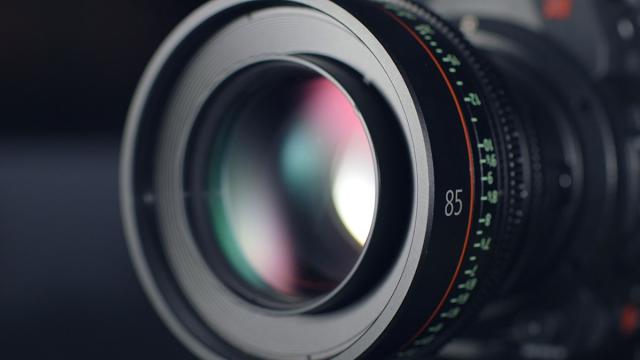Just when you think you’re safe and secure in your camera buying choices — ready to pick up a new model with state-of-the-art 4K video recording — along come the likes of Blackmagic and Panasonic with new 6K-capable models. Have you missed the 6K TV revolution, you might be wondering? Where have an extra few million pixels come from? Here’s what you need to know about these new 6K cameras.
The most recent cameras we’re referring to are the Panasonic Lumix S1H (max resolution of 6,000 pixels by 4,000 pixels) and the Blackmagic Pocket Cinema Camera 6K (max resolution of 6,144 pixels by 3,456 pixels) — they’re not the first and they won’t be the last to offer video recording at resolutions up to and including 6K.
Actually, if you’re a serious movie maker, we’re getting close to the tipping point where you’re going to be looking for 6K rather than 4K (3,840 by 2,160 pixels) shooting capabilities. Yet at the same time you’re not going to see 6K films and shows appear on Netflix any time soon (these cameras tend to use variable aspect ratios for a start).
So why buy a camera that captures in 6K when you know you’re not going to be showing the end result in 6K?
In short: More pixels. Like 4K before it, that 6K jump gives videographers more flexibility. They can crop down a scene in post, or shrink down an image to reduce some of the graininess. Those extra pixels can be useful in all kinds of ways.
Think about when video gets stabilised: Algorithms shift the position of frames so the scenes and objects are aligned rather than all over the place, which means some frames get pulled left or right, and some get pulled up or down. As a result, the edges of the frames often get lopped off as each one is adjusted, ultimately leaving you with a lower resolution than you started with.
If you start out with a 4K resolution, you’re going to lose some pixels and some quality if that video gets stabilised. If you start with a 6K resolution, you can apply some pretty aggressive stabilisation techniques and still come out with a crisp, genuine 4K movie at the other end. This does require some know-how from the user for framing shots a little wider than usual.
The same sort of principles apply in post-production too. 6K footage is going to place more demands on a video editing rig, but it’s a small price to pay when you’ve got all those extra pixels to play around with — visual effects have more raw pixels to work with, for example, even if the end result gets scaled down.
Green screen effects can be cleaner with a larger resolution and more pixels too, and when you see the amount of editing and layering modern-day films use for replacing what’s real and physical with what’s digital and computer-generated, it’s easy to understand how extra pixels can boost fidelity and realism — the more dots on the canvas, the better.
Then you’ve got the cropping and panning options we alluded to earlier in regards to video stabilisation. If you’re going to output a 1080p video to YouTube that’s a fraction of the size of an overall 6K frame, so you can pan across a fixed 6K shot with no loss of quality.
Yet another area where 6K can help is in pulling stills from a video, whether that’s to promote the film, or as a side project, or for any other reason — those stills are going to be better quality than they are at 6K compared to 4K (all other factors being equal).
Essentially, it gives filmmakers and editors many more options when it comes to working on projects, not just in what can be done, but in the sort of quality that can be retained. It’s worth the investment even if no one else ever sees a 6K end result.
On a more technical level, 6K also helps with what’s known as demosaicing, which is basically an algorithm-led part of the photo-taking process that uses approximations to reproduce real-life colours in a digital picture. The higher the resolution, the fewer approximations are required.
And finally there’s what’s known as oversampling, or shooting lower-resolution images with higher-resolution sensors. The end results are similar to what you get if you shrink a bigger image down to a slightly smaller one in a photo editor—sharper edges, less aliasing, in theory — but in this case, it’s done on the camera itself.
You’re capturing more data than an image actually needs in order to improve it, and it’s another tool in your toolkit if you want to end up with 4K results but can capture in 6K at the outset.
Add to all those reasons the way that technology just inevitably rolls forward to newer standards, even when there’s not a huge demand for them, and it makes a lot of sense to film your movies in 6K then rejigger them to 4K rather than starting with 4K in the first place: It gives you a good chance of a better final result in 4K. You get some extra quality, and without the masses of extra data that 8K is going to bring.
Sure, 6K might only have a brief moment in the sun before 8K arrives to replace it, but for a lot of pro users it’s worth paying for the most pixels you can get your hands on. For the rest of us, you’re probably still ok with your phone.
